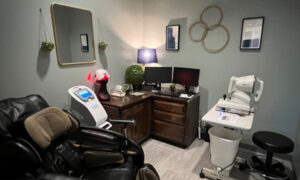By Kelly Kerksick, OD
Sept. 23, 2015

SYNOPSIS
Mandated conversion to ICD-10 codes is here. Utilize your electronic health records as a key to ICD-10 conversion success.
ACTION POINTS
USE EHR’s AUTO-CODING. Make full use of your EHR’s ability to automatically change ICD-9 to ICD-10.
TAKE OWNERSHIP AS PRACTICE LEADER. Use EHR partner resources, and other resources, to educate yourself, and then lead staff education.
ESTABLISH TROUBLESHOOTING TOOL. Know whom, or what resource(s) provided by your EHR provider, can help you troubleshoot if claims are returned.
The conversion to ICD-10 represents a major shift for optometric practices. Fortunately, electronic health record systems can be of great assistance in making this transition.
Never underestimate how a change like this can impact your office. The biggest concern of my two-doctor, three-support staff practice is timely reimbursement, so we have planned accordingly to ensure we don’t have a cash flow crunch. Having RevolutionEHR in my practice has truly made the difference. I can’t imagine what my stress level would look like if I didn’t have my EHR! Here is how my practice is using our EHR to meet the challenge of ICD-10.
 EHR: Key ICD-10 Educational Resource
EHR: Key ICD-10 Educational Resource
RevolutionEHR has provided helpful resources for the transition to ICD-10. They have informational ICD-10 webinars for users which give examples on how to properly code using the new ICD-10 coding system. Also, many of the ICD-9 codes will automatically convert to ICD-10 in my EHR, which helps reduce stress levels in my practice.
In addition to webinars which can be watched on any computer, tablet or smartphone, RevolutionEHR provides hands-on training for staff. Training sessions with customer support representatives are available to educate users on how to make claim submission faster and more accurate. These resources can help both you and your staff better understand how to optimize the EHR’s auto-coding feature, and what to do if a claim is rejected and sent back. In addition, we’ve learned how to troubleshoot and then re-submit with enough speed to not inhibit profitability.
Auto-Coding: An Essential ICD-10 Aid
RevolutionEHR eases the ICD-10 transition for the doctor by implementing an auto-coding function in the software. Many of the ICD-9 codes will automatically map over to ICD-10, and for the majority of those that don’t, the software will present choices for the practitioner to choose from if multiple codes could apply. There are no additional costs or charges for these software enhancements, as well as no onsite update or upgrade needed.
Take Ownership as Practice Owner of ICD-10 Conversion
It is ultimately the doctor’s responsibility to code properly; however, using RevolutionEHR’s coding and billing service, RevCycle, has proven to be a helpful asset. Doctors need to have a good understanding of how to code ICD-10, but the cross-mapping from ICD-9 to ICD-10 is such an amazing feature of the software, it has really eased the burden of this transition for me and my entire practice.
Practice Makes Perfect
Even though I don’t think anyone can be 100 percent prepared for this transition, practicing will definitely help. We have gone through example scenarios in our office during which we practice coding pretend charts in ICD-10, however, we understand that much more will be learned as we go through the actual process.
It is critical to have industry partners, like an EHR provider, that can help you work out the inevitable kinks that will occur in the first months after ICD-10 implementation. For instance, it’s important to find out ahead of time if your EHR partner has a dedicated phone line, web portal or point person you can reach out to if you have difficulty using the coding and billing function in your system to submit claims. Once you establish the points of contact (and people), be sure to let employees know where to turn, or whom to call when difficulties arise, and then post that information some place prominent online and in the office.
Maintain Regular Office Schedule
We don’t plan to alter or cut back our regular office hours in the first days after ICD-10 implementation. Perhaps we will regret that decision, but I don’t think that it will be necessary. If needed, I can reference any of the codes that may need to be manually selected (in addition to the auto-coding functionality) at the end of the day. I’d rather troubleshoot at the end of each day than alter the practice’s schedule and workflow.
Educate Yourself & Keep Staff Updated
I’ve purchased a code book and share ICD-10 updates at staff meetings in an effort to get my staff comfortable with the upcoming transition. Code books are a great way for a practice owner to ensure she/he is up to date before educating staff. Here are few key resources:
2015 AOA ICD-10 Codes for Optometry Book and Express Mapping Card
ICD-10 2014 Rapid Coder for Ophthalmology/Optometry
Kelly Kerksick, OD, owns Midwest Visioncare in Columbia, Ill. To contact her: kerksickod@yahoo.com




























